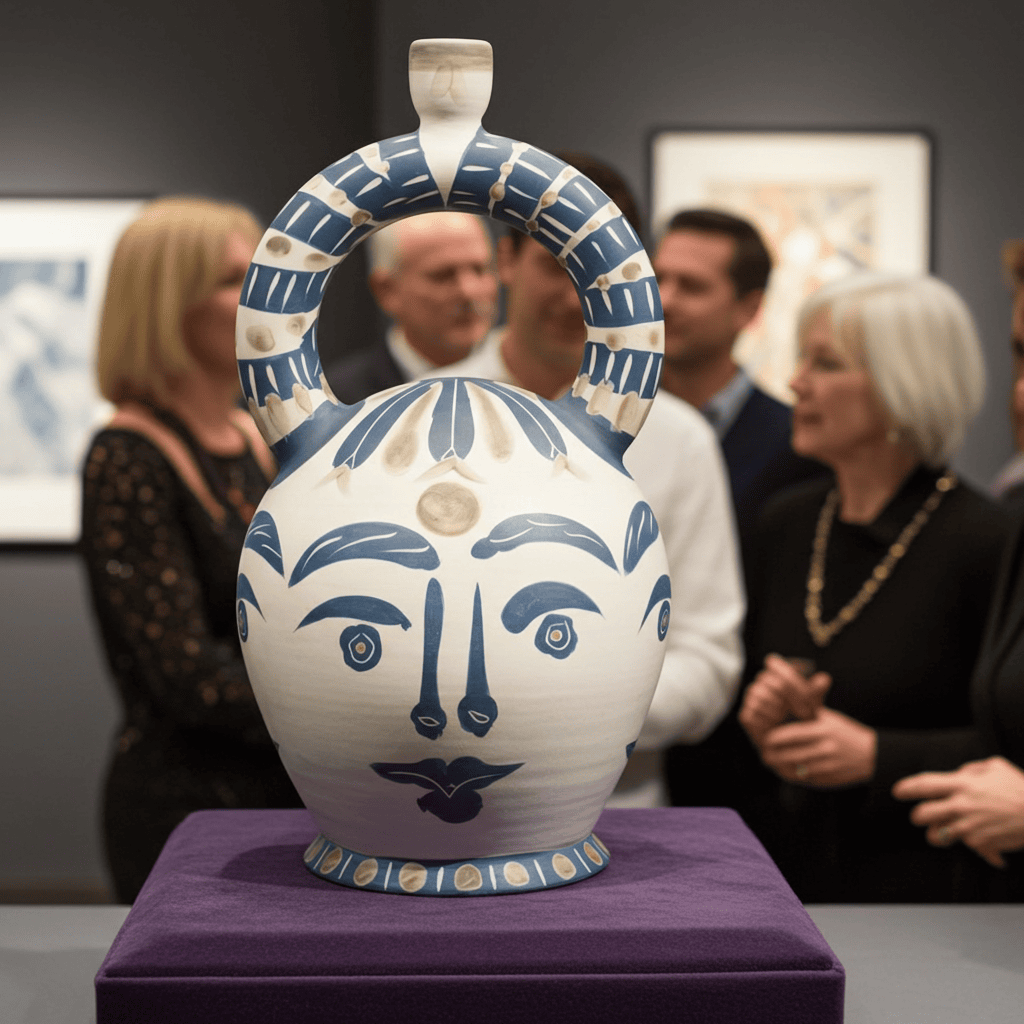
One of Pablo Picasso’s most famous political works, Guernica (1937) was Picasso’s reaction to the bombing of the Basque town Guernica by German and Italian warplanes during the Spanish Civil War in 1937 which was a fight for power between the Republicans, who were loyal to the democratically elected Spanish Republic, and the Nationalists, a fascist rebel group led by General Francisco Franco.
Picasso had an avid interest in politics and as Fascism was on the rise in the 1930s tensions mounted between the opposing camps with all of Europe becoming involved. Picasso, who had last visited Spain in 1934 and would never return, was living in Paris during this turbulent time and began to look for a way in which his work could contribute to the cause of the Republicans.

In his first such display, on July 14, 1936 Picasso contributed an enlarged version of an earlier painting on the theme of the Minotaur to some festivities organized by the Popular Front (supporters of the Republicans) which was used as the curtain for Romain Rolland's play Le 14 juillet. The Spanish Civil War broke out just a few days later, on July 18, 1936 and in response Picasso etched a sort of Cubist comic strip called "The Dream and Lie of Franco," portraying General Franco as a revolting little gnome, and wrote an accompanying poem to be sold for the benefit of the Spanish Republic.
To show their gratitude for his support, the Spanish Republic named Picasso the Honorary Director-in-Exile of the Prado Museum in 1936. As the events of the war unfolded in his beloved homeland, Picasso paid close attention, finding the German and French intervention in the war particularly appalling. In January of 1937, the Spanish Republican government commissioned him to create a large mural for the Spanish display at the Exposition Internationale des Arts et Techniques dans la Vie Moderne at the 1937 World's Fair in Paris. Picasso started working on a project, but after reading George Steer's eyewitness account of the event of the Guernica bombing in May of that year (originally published in both The Times and The New York Times on April 28), Picasso abandoned his original idea and started sketching a series of preliminary drawings for the mural-sized Guernica (1937). This new idea captivated his imagination and two months later in June of 1937, Picasso finished the painting.

At its unveiling at the Paris Exhibition that summer, the painting garnered little attention. It wasn’t until it’s brief world tour that it became famous and widely acclaimed, drawing international attention to the still ongoing Spanish Civil War. The Spanish Civil War ended in 1939 with General Franco taking control of Spain and the events of the Second World War soon followed which made the impact of Picasso’s work even more historic. After it’s tour, it was placed in the care of the Museum of Modern Art (MoMA) in New York, as it was Picasso's express desire that the painting should not be delivered to Spain until liberty and democracy had been re-established in the country. This occurred in 1981, when it was displayed at the Casón del Buen Retiro in Madrid to celebrate the centenary of Picasso's birth, October 24. This landmark exhibition was visited by almost a million people in the first year. Upon completion in 1992 of a gallery built specifically for the work at the Museo Reina Sofía, Guernica (1937) was moved to its current permanent location.
Although this is about the history of Guernica (1937), it would be remiss not to mention in brief part the symbolism as it serves as an anti-war symbol, a reminder of the tragedies of war, and an embodiment of peace. A combination of pastoral and epic styles, Guernica (1937) stands at 11 feet tall and 25.6 feet wide, a mural-size canvas painted in oil. A potent symbol of the destruction of war on innocent lives, the work is a testament to Picasso’s ingenuity as an artist and life-long passion for peace.








